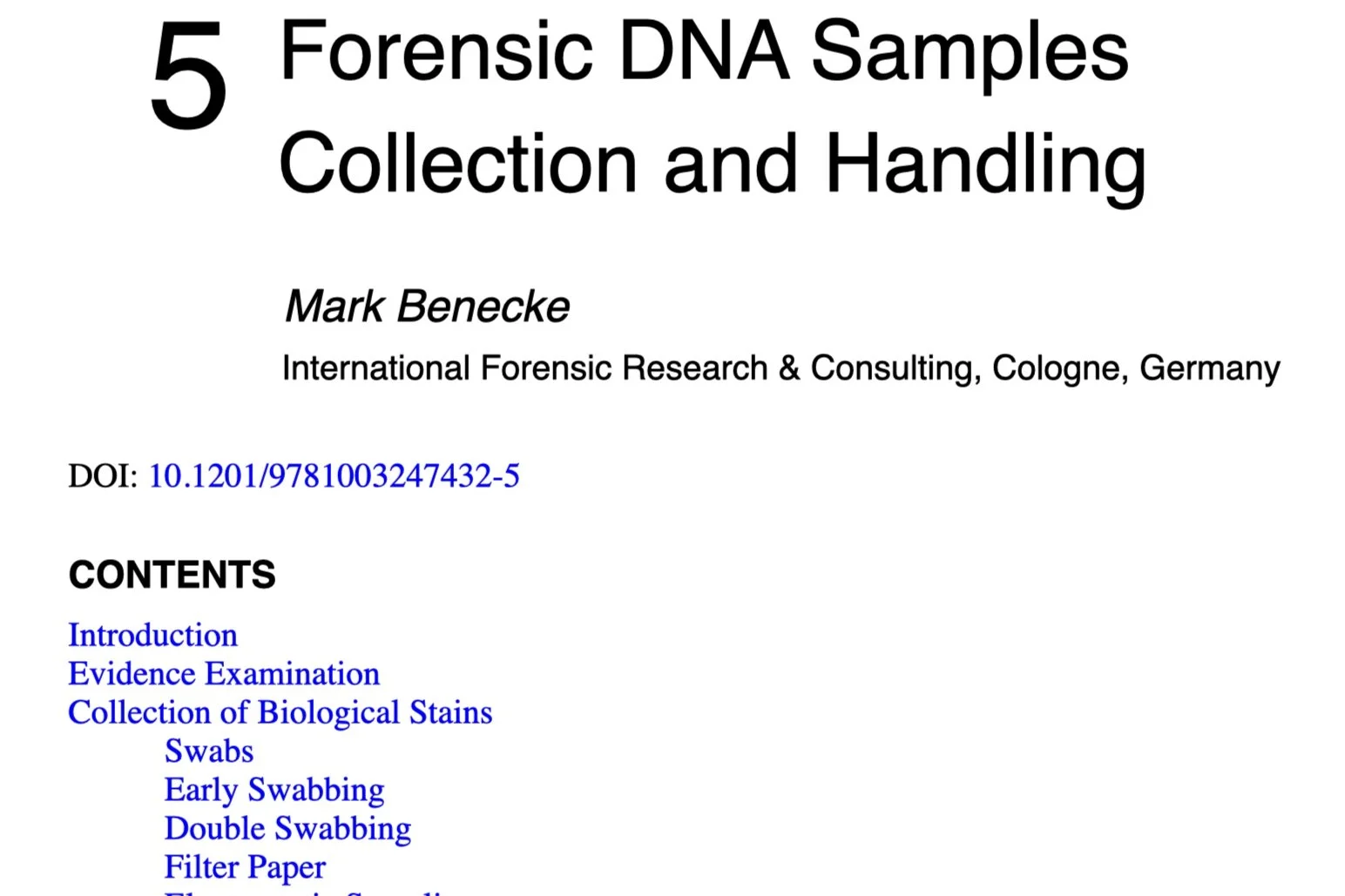Die Gedenkstätte hatte neue Gutachten in Auftrag gegeben, nachdem geschichtsrevisionistische Kreise die Verbrechen der SS und der Echtheit der überlieferten menschlichen Überreste immer wieder in Frage gestellt hatten.
A brief overview is given of past and present DNA typing and the establishment of forensic DNA databases in Europe.
After attending this presentation, attendees will understand why it is important to listen to the victim and relatives, who do not fully understand the objective DNA evidence, but who point in a relevant direction relating to procedural failures of police and crime labs.
We have not been able to distinguish different isolates from the nematode Caenorhabditis elegans by morphological means. However, they differ on the molecular level and strains from several geographic regions can be identified with the help of "genetic fingerprints" using the oligonucleotide probe (GTG)5.
Allele frequency distributions at the short tandem repeat (STR) loci HUMVWA, HUMFES, HUMF13A01 and of the variable number of tandem repeat (VNTR) locus D1S80 were determined in a Filipino population from Metro Manila (103 individuals) by use of the polymerase chain reaction (PCR) followed by polyacrylamide gel electrophoresis (PAGE).
Applied DNA typing in medico-legal investigations, in criminalistic practice, and in paternity cases often relies on high inclusion and exclusion probabilities.
Das Bremer Fachforum stellt mit dem Mord an Mirco in NRW im Jahr 2010 dar, wie ein sehr schwieriger Fall technisch, organisatorisch und gedanklich bearbeitet und gelöst werden konnte.
It is frequently difficult to prove the vitality in cases of fatal hanging. Statistical analysis demonstrated a significant correlation between elevated DNA content and reduced water content of strangulation marks.
In an apartment, bone fragments were found in a fireplace. Furthermore, a varnished skull was found elsewhere in the same apartment.
Having solved the last technical hurdles to extract DNA information from virtually any biological material, forensic biologists now have to ponder the ethical and social questions of using information from exonic DNA.
For several years Y-chromosomal microsatellites (short tandem repeats, STRs) have been well established in forensic practice. In this context, the genetic characteristics of the Y chromosome (i.e. its paternal inheritance and lack of recombination) render STRs particularly powerful.
The hypervariable tetranucleotide STR polymorphism DXS10011 is a powerful marker for forensic purposes.
To permit quick identification of arthropods, random amplified polymorphic DNA typing (RAPD) was used to support classical morphological and medico-legal analysis of maggots on a human corpse.
Two cases demonstrate that full reliance on biological stains may lead to either wrongful convictions or no prosecution at all.
Digitalisat der Zeitschrift "SeroNews". Mit Herzblut erstellt von Wolfgang Huckenbeck (Inst. f. Rechtsmedizin der Heinrich-Heine-Universität Düsseldorf) & Team.
Warum Wissen über Brechbohnen bei der Aufklärung helfen kann und was Spider-Man mit seiner Karriere zu tun hat, darüber hat der Kriminalbiologe Mark Benecke mit Anja Goerz gesprochen.
During the 1990s, Mark worked in the Philippines and Vietam to set up forensic DNA laboratories for universities (University of the Philippines, Diliman, Manila; Ho Chi Minh City). It was a truly wonderful time
In der geheimen Bakterien- und Zellsammlung des Leibniz-Institut DSMZ in Braunschweig 🧫 sind die meisten aller bekannten Bakterien vorrätig.
Am gestrigen Dienstag (16. Juni 2020) besuchte der Kölner Kriminalbiologe Dr. Mark Benecke von 15 Uhr bis 19 Uhr das Leibniz-Institut DSMZ-Deutsche Sammlung von Mikroorganismen und Zellkulturen GmbH auf dem Science Campus Braunschweig-Süd.
Kriminalbiologe Mark Benecke äußert sich über den Fall Maddie McCann, die Suche am Tatort und seinen Besuch in Braunschweig
Während die Rechtsmedizin sich in erster Linie auf die Feststellung der Todesursache konzentriert, ist die Kriminalbiologie eher dem Täter auf der Spur.






























